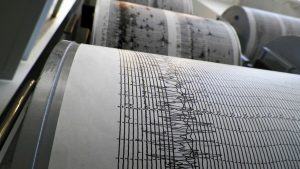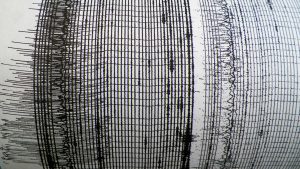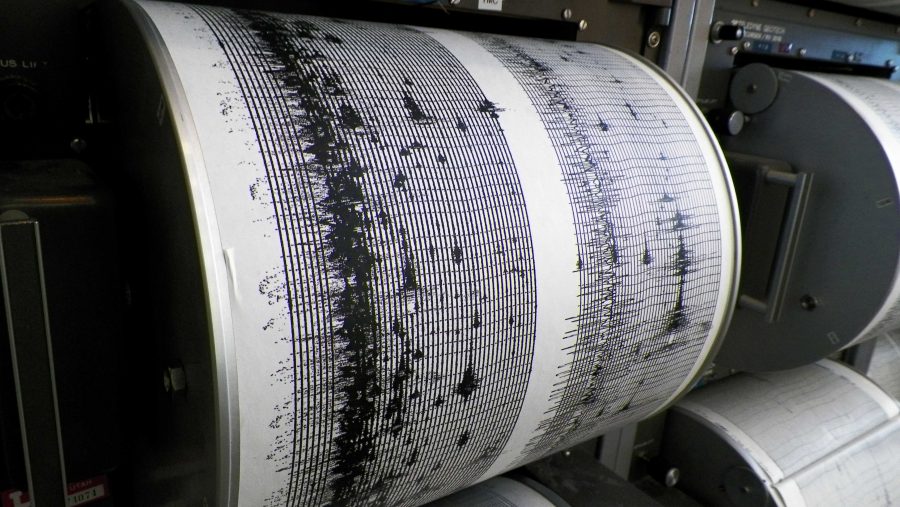Utah Shaken by Recent Earthquakes
(Photo by Hailey Danielson | The Daily Utah Chronicle)
February 28, 2019
In recent days, many people across the Wasatch front have been concerned after hearing about or being woken up by earthquakes. The University of Utah Seismograph Stations (UUSS) have recorded over 139 earthquakes near Bluffdale, Utah between the Feb. 13 and Feb. 25.
The largest earthquake occurred on Feb. 15, at 5:09 a.m. MST. It registered at 3.7 on the Richter scale. Before this “mainshock” earthquake, there were 13 earthquakes that are known, in retrospect, as foreshocks. The largest foreshock was 3.2 and occurred seven minutes before the mainshock. 125 of the earthquakes happened after the mainshock, and the biggest aftershock registered at a magnitude of 3.1. That aftershock was days later at 2:31 a.m. MST on Feb. 23.

Many residents in Draper and Bluffdale were woken up by the shaking and noise caused by the earthquakes. Some have described it as sounding like “a big train going right by your house.” Many posted on Facebook or texted friends asking if they felt it since they were unsure of whether it was really an earthquake or just a strong gust of wind.
According to the UUSS, “It is possible that the Bluffdale earthquakes are occurring on the nearby Wasatch fault. However, it is also possible that they are occurring on a minor, unnamed fault.” The earthquakes are considered normal given the fact that earthquakes occur every day in Utah, but most of them are too small to be felt.
Many people believe that smaller earthquakes relieve pressure on the fault so they don’t have to worry about “the big one” that has been predicted for many years to happen soon. However, this is not true. When asked about this idea, faculty at the UUSS said, “No, small earthquakes do not relieve enough stress buildup in the earth to reduce the likelihood of a large earthquake. In fact, every earthquake that occurs has a small, roughly one-in twenty, chance of being a foreshock to a larger earthquake within five days.”

Whether this seems scary or unphasing, everyone in Utah should be prepared for the possibility of a large earthquake happening at any time. In a publication by the Utah Seismic Safety Commission, it is pointed out that “most of Utah’s population lives within an active earthquake belt.” The same publication gives information pertaining to why you should care about earthquakes, what you can do to prepare for them and what you should do in the case of an earthquake. It also discusses potential damage if there were an earthquake with a magnitude of 7.0 or higher. It is estimated that in Salt Lake City, there would be $42 billion in losses, 150,000 displaced households and 9,000 life-threatening injuries or fatalities.
Many residents east of the roundabout in Draper, who live near the fault line, discussed their experiences during the recent earthquakes and shared concerns about how they would get to their food storage or out of the area if they needed to. The recent quakes caused many residents to rethink their strategies and renew their plans in case of emergencies. Whitney Mangelson who graduated from the U last spring said, “The earthquakes were terrifying for me because all my life I’ve been told the big earthquake would happen soon. They made me realize we need to do better with our food and water storage, and I picked a place in my room to run to if a 7 or 8 happened.”
The UUSS wants people to know that “the recent earthquakes near Bluffdale serve as a reminder that Utah is earthquake country and a large, damaging earthquake could occur at any time. Therefore, everyone living in Utah should strive to be prepared for large earthquakes.”








